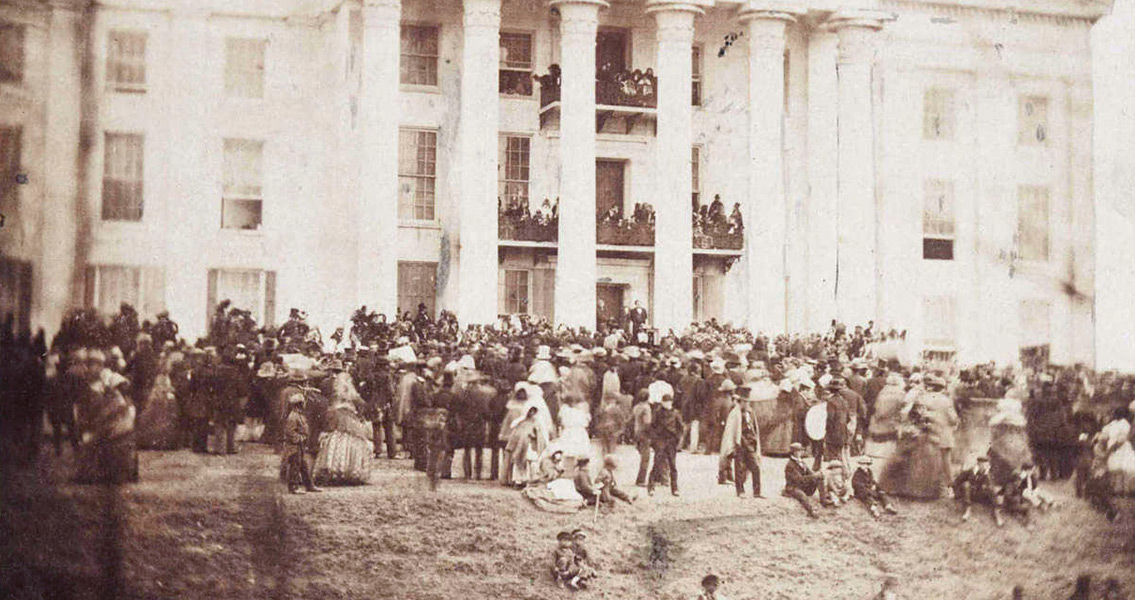<![CDATA[Delegates from South Carolina, Mississippi, Florida, Alabama, Georgia, Louisiana and Texas convened in Montgomery, Alabama on 4th February, 1861, for a meeting which culminated in the formation of the Confederate States of America. It was the step which led to the American Civil War, the end point of decades of increasing differences between the 'North' and 'South' in the United States. The participants had already seceded from the Union, starting with South Carolina on 20th December, 1860. The meeting on 4th February was to establish a new government for the group of seven states. On 8th February that goal was achieved, Jefferson Davis, a hero of the Mexican War from Mississippi, was announced president of the Confederate States of America. A new constitution for the southern states was adopted on 11th March. Although in many ways similar to the constitution of the northern states, it contained some key differences. The president of the Confederacy would serve a term of six years with no option of reelection, as opposed to the four year terms in the Union which gave the president the opportunity to run for a second term. A key focus of the Confederate constitution, reflective of the issues that had caused the secession in the first place, was a strengthening of the rights of individual states. The government was banned from levying protective tariffs on trade and taxing exports. Decisions made in state courts could not be overruled, and each state was allowed to maintain its own army. The leaders of the Confederacy had hoped to secede peacefully from the United States, but the government in the North was unwilling to acquiesce; President Abraham Lincoln soon called for volunteers to quash what he deemed a rebellion. On 12th April 1861, just over two months after the Confederate States had been proclaimed, the first battle of the US Civil War took place at Fort Sumter, South Carolina. Following this initial confrontation four more states seceded: Arkansas, Tennessee, North Carolina and Virginia, and the US Civil War quickly escalated. A number of factors had pushed the Confederate leaders to declare independence. Fundamental political, social and economic differences had formed between the northern and southern states over the course of the nineteenth century. The North had industrialised rapidly, while the South still largely relied on an agriculture based economy. Whereas the north was able to call upon a growing immigrant population from Europe to drive its economy, the south was dependent on slave labour. At the same time, tariffs issued by the government served to protect the North's industrial goods from foreign competition, but failed to do the same for the crops grown in the South. In fact, they only succeeded in keeping the price of vital commodities artificially high. A fundamental ideological difference seemed to exist between the two halves of the country as well, the southern states favouring greater independence for state governments, the North in favour of a powerful federal government, responsible for paying for the maintenance of the country. The election of the Republican government of Abraham Lincoln in November 1860 proved the final straw, pushing the Confederate states into action. The Republicans had made their stance clear as a party of radical abolitionists. The Southern states, whose entire economy was dependent on slavery, swiftly moved to seek independence. Unsurprisingly, a key part of the Confederate constitution addressed this issue, making clear that any new territories taken by the Confederacy would have to uphold the same laws in regards to slavery. ]]>
The Meeting that Made the Confederate States of America
